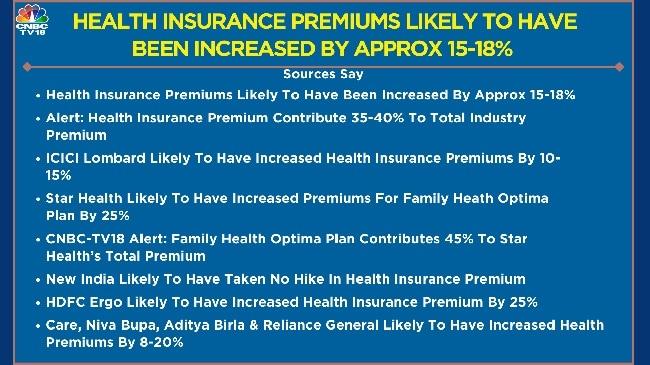As the 2026 election cycle approaches, health care premiums are emerging as a pivotal issue in political races across the country. KCCI’s latest report takes a close look at how rising costs and evolving policies are shaping voter priorities and campaign platforms. With several key races opening up nationwide, candidates are navigating the complex landscape of health care affordability, access, and reform – issues that could determine both electoral outcomes and the future of the nation’s health care system. This in-depth analysis explores what’s at stake and how the debate over premiums is influencing the 2026 political battleground.
Close Up on Health Care Premium Trends and Their Impact on Consumers
Amid a shifting political landscape and evolving economic pressures, health care premiums continue to climb, affecting millions of Americans. Recent data reveals that the average premium increase for 2026 plans is projected to reach 7.2%, outpacing wage growth and inflation. This rise places a heavier burden on consumers, especially those who do not qualify for subsidies. Key drivers behind the surge include increased demand for medical services, advancements in treatment technologies, and ongoing supply chain disruptions that inflate operational costs for providers and insurers alike.
Consumers are feeling the pinch in multiple ways:
- Higher out-of-pocket costs: Deductibles and copayments are rising, leading to increased upfront expenses before insurance coverage kicks in.
- Reduced plan options: Several insurers are pulling back from competitive markets, leaving fewer choices for shoppers.
- Subsidy dependency: More households may rely on government assistance programs to afford coverage, intensifying debate around the sustainability of subsidies.
| Premium Factor | Impact Level | Consumer Effect |
|---|---|---|
| Medical Inflation | High | Significant premium hikes |
| Insurer Market Withdrawal | Moderate | Limited plan options |
| Policy Uncertainty | Moderate | Increased financial planning difficulty |
Examining Open Races in 2026 and What They Mean for Health Policy
As the 2026 election cycle approaches, several open races across key states are drawing significant attention from health policy analysts and political strategists alike. These contests hold the potential to reshape legislation around healthcare premiums, Medicaid expansion, and insurance regulation. The absence of incumbents in these districts means candidate platforms will likely vary widely, with some advocating for stricter cost controls while others push for market-driven solutions. Voters in these regions are effectively holding the key to whether health policy leans toward increased state intervention or deregulation, impacting premiums for millions nationwide.
Key issues dominating debates include:
- Premium affordability: Strategies to curb escalating costs without sacrificing coverage.
- Medicaid adjustments: Prospects for expanding or contracting state programs based on fiscal priorities.
- Insurance market stability: Balancing competition with consumer protections.
| State | Incumbent Status | Health Policy Stance | Projected Impact on Premiums |
|---|---|---|---|
| Ohio | Open Seat | Market-Driven Reform | Potential Decrease |
| Michigan | Open Seat | Medicaid Expansion | Moderate Increase |
| Georgia | Open Seat | Health Access Focus | Variable |
Policy Recommendations to Navigate Rising Costs and Political Shifts
Amid rising healthcare premiums and the evolving political landscape, policymakers must adopt innovative strategies to shield consumers while maintaining system sustainability. Expanding subsidies and enhancing transparency around premium pricing can empower individuals to make informed decisions. Additionally, fostering public-private partnerships may inject much-needed competition into the insurance market, potentially curbing cost escalations. Equally important is investing in preventive care initiatives, which can reduce long-term expenses by addressing health issues before they require expensive interventions.
Targeted regulatory reforms can also play a critical role. For instance, introducing caps on premium hikes and streamlining the approval process for new insurers could stimulate market diversity. The table below outlines key policy tools alongside their anticipated impact and feasibility:
| Policy Tool | Expected Impact | Feasibility |
|---|---|---|
| Premium Subsidy Expansion | Improves affordability for low-income families | High |
| Price Transparency Mandates | Empowers consumer choice, pressures insurers | Medium |
| Regulatory Caps on Rate Increases | Limits sudden premium spikes | Low to Medium |
| Encouraging Market Competition | Drives down prices through insurer diversity | Medium |
Key Takeaways
As the 2026 election cycle approaches, the future of health care premiums remains a critical issue for voters and policymakers alike. Open races across the state are expected to bring fresh perspectives and vigorous debates on how to make health care more affordable and accessible. With premiums continuing to rise for many families, the decisions made by upcoming candidates will have far-reaching impacts on the state’s health care landscape. KCCI will continue to monitor these developments closely, providing comprehensive coverage as the conversation around health care evolves in the months ahead.
